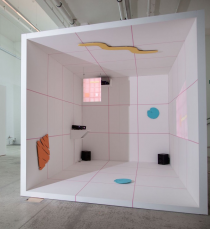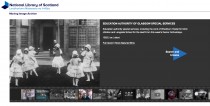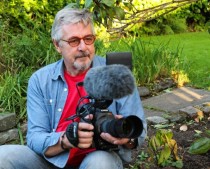Developing movie film at home? That surely can’t be possible?
Well you can, and it’s also very simple, so here is how to do it.
Movie film can’t be developed at Jessops (or more correctly Jessops won’t develop movie film for you) and usually has to be sent off to expensive specialist labs in London. But you can do it yourself. It is also fun and gives you a freedom to experiment which may be difficult/expensive in a professional film lab.
How do you do it then?
The home development of movie film is based on the home developing of stills film. So to understand it, you need to learn about stills film.
Broadly speaking, still film can be put into two categories – Positive and Negative film.
Positive film is known as slide/reversal film – when your photos are developed you have a positive – i.e. normal image on your film, which is intended to be projected (in the way that families would bore each other with holiday slide shows in the 1970s).
The more common type is Negative film – each image on your film is a negative. To see your image properly you have to print this onto photographic paper.
In addition to these, both Positive and Negative films can be in colour or black and white. Each different method requires different chemicals to achieve correct development.
We now know there are two types of chemicals for reversal developing– reversal black and white, and reversal colour. And two types for Negative – Negative Black and White, and Negative colour. This means there are 4 different ways (chemicals) to develop your film for optimum results. Importantly, it is possible to develop your film in the ‘wrong’ chemicals, which we will see later.
The simplest method is Black and White negative. In stills photography it is a simple task of using two chemicals – a developer and a fixer. Basically the developer forms your latent image on your film and the fixer keeps it there. The most common and cheapest B+W developer is Kodak D76. The most common B+W movie film – Kodak 5/7222 uses an almost identical developer (Kodak D96). Unfortunately D96 is difficult to obtain in small quantities but D76 can be purchased in Jessops for about £5 for 5 Litres. This will allow you to develop your movie film to near Kodak specs perfectly. A simple fixer (I use Ilford) will fix your film. And there you go.
So, you can see that with spending just over £10 you can start to develop your own film. With a simple cheap 16mm movie camera such as a Bolex and cheap B+W stock you can start shooting and developing your own film for a fraction of the cost of professional labs.
For more instructions on developing just try a google search for ‘Black and White film developing’. The developing kits also contain simple instructions. But yu can’t go far wrong with what is available on the internet.
The main problem you will find is finding space to develop your film. Still spiral loading tanks are far too small to wind in 100’ of movie film. Luckily you can buy movie processing tanks. Lomo make a variety for 8mm, 16mm and even 35mm from about £75. Check out ebay for the best deals. There are also Morse tanks from the Second World War (war cameramen developed their own film). Or if you have a dark room you can just shove it all into a bucket for a messier result (which I prefer).
Colour negative can also be easily developed. Nearly all still colour negative film uses the C41 process. All colour negative movie film uses the ECN2 process which is very similar except for one important detail. Colour movie film contains a horrible thick layer of paint called RemJet. It is designed as an anti halation backing which still film does not have. When you process your movie film in stills chemicals you have to manually take this layer off – either by hand afterwards or chemically before with something like Borax.. It’s a bit trickier to get C41 chemicals in the high street so you might need to try online.
If you have reversal film you can buy a cheap B+W reversal stills.or colour (E6) kit and develop your footage which can be viewed directly. Reversal developing is actually quite a bit trickier, especially colour so you should not be attempted until you are happy with B+W/Colour neg.
Problem 2. You can use an ordinary 8mm/s8/16mm projector to view your reversal films directly. Negative films will only produce a negative image. And additionally negative films are very easily scratched, unlike reversal which were designed for projection.
It is possible to project your negative film and do a home telecine with a camcorder – either with a ‘negative art effect’ if your camera has one, or in editing software. But as mentioned it is very easily scratched.
This is really the home developing bottle neck. You can get very professional developing results but generally poor telecine (converting to video). I quite often relent and send the developed negative to a film lab for a much higher quality telecine.
In addition you can use different film in different developers. This is called Cross-Processing. Any film – colour or reversal can be developed in standard B+W chemicals – as a B+W negative. B+W film can’t be developed in colour but every other combination can be tried.
If you have access to a movie camera you should give it a try. If you’ve not tried developing stills before you can purchase a very cheap ‘one-shot’ 35mm camera, B+W developer and Fixer from Jessops and a small spiral tank for around £20. A thermometer is also a very hand addition, especially in colour. There are plenty of different ways to do this and plenty of websites with instructions on the internet. You can create genuinely unique looks in your photographs or video footage that would be impossible to recreate using photoshop/after effects. There are so many ways to explore this that you won’t get bored. And it’s also fun. If you really want to do it on the cheap you can try using coffee to develop!














Comments